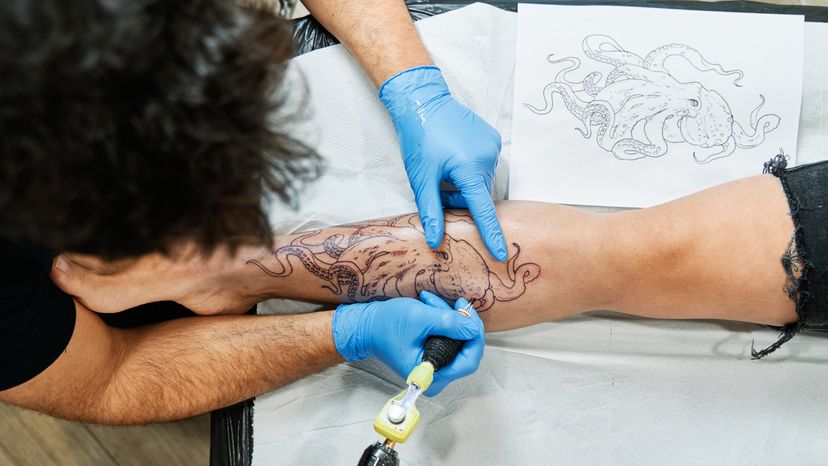
- When receiving a tattoo, your skin is pricked between 50 and 3,000 times per minute by a needle in the tattoo machine. Learn more about how the tattoo machine works.
- Tattoo machines have been around since the late 19th century, and surprisingly, they haven't changed much in 100 years. Learn more about the history of tattoo machines.
- Most tattoo machines consist of four parts: The needle The tube that holds ink An electric motor A foot pedal to control the movement, similar to how a sewing machine works Learn more about the components of a tattoo machine.
- Sterilization and disposable materials are crucial to tattooing, as tattoos are created by thousands of puncture marks to the skin, each of which could become infected. Learn more about the sterilization process.
- The autoclave is a popular way to sterilize any tattoo equipment that isn't disposable. A combination of heat, steam and pressure kills all bacteria and organisms to prevent infection. Learn more about autoclaves.
- Ancient tattoo methods involved picks, rakes and chisels. In some cases, a soot-covered thread was sewn through the skin. Learn more about early tattoo methods.
- Be prepared to shell out some significant dollars for a tattoo. Tattoos under an inch cost between $50 and $100. Imagine what that full-back design would go for. Learn more about tattoo prices.
- Though tattoos are sometimes associated with rebellion, uniformity is paramount when it comes to application: Too-deep punctures result in pain and bleeding, while too-shallow ones create uneven lines. Learn more about tattoo application.
- The tattoo process has four basic steps: Outlining Shading Color Cleaning and bandaging Learn more about the tattoo process.
- Tattoo seekers can expect to feel some pain: The process has been described as similar to bee stings or sunburns. Placement, size, type and artist skill, however, can all make a difference. Learn more about tattoo pain.
- Unclean tattooing practices can transmit diseases such as syphilis, hepatitis B and HIV; however, there has yet to be an actual case of HIV being transmitted via a tattoo application. Learn more about tattoo health risks.
- Some pigments used in tattoos contain metal, which can cause pain during a magnetic resonance imaging (MRI) test, or even affect the MRI images as a result. Learn more about tattoo pigments.
- The U.S. Food and Drug Administration does not approve, nor regulate, the pigments and inks used for tattoos. In addition, few states regulate tattoo parlors, so it is up to you to find a safe, clean, reputable tattoo artist and parlor. Learn more about getting a tattoo safely.
- Get some background information on your tattoo artist. Ask to see that they have a license, and inquire as to their membership status. Tattoo artists don't have to belong to professional trade organizations, but those who do are usually the most up-to-date on information and trends in the industry. Learn more about what questions to ask your tattoo artist.
- Look through books of tattoo artists' work, or watch them apply other tattoos. Even if they have all of the proper credentials and follow safety rules, they may not be much of an artist. Learn more about what to look for in a tattoo artist.
- After receiving a tattoo, ask your artist if they have a sheet or pamphlet that describes the required aftercare. Infected tattoos can be painful and dangerous. Learn more about tattoo aftercare.
- Think carefully beforehand about what kind of tattoo you'd like to have; almost a fifth of people with tattoos in the United States regret getting one, and it's usually because it contains a name. Learn more about choosing a tattoo.
- Scabs after a tattoo are OK -- don't pick at them because they should fall off on their own within three weeks -- but if you start to see signs of an infection, see a doctor. Learn more about keeping your tattoo healthy.
Here are some helpful links:
Advertisement